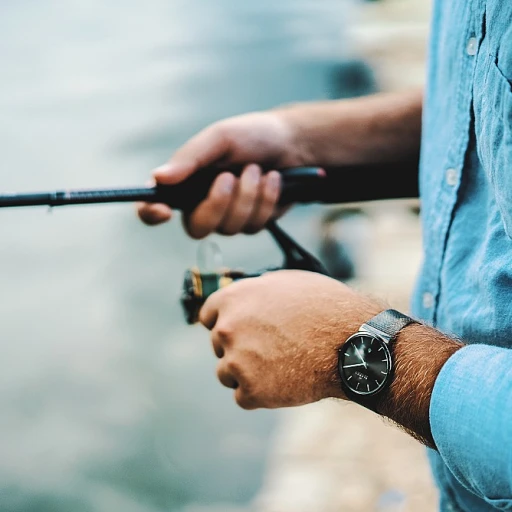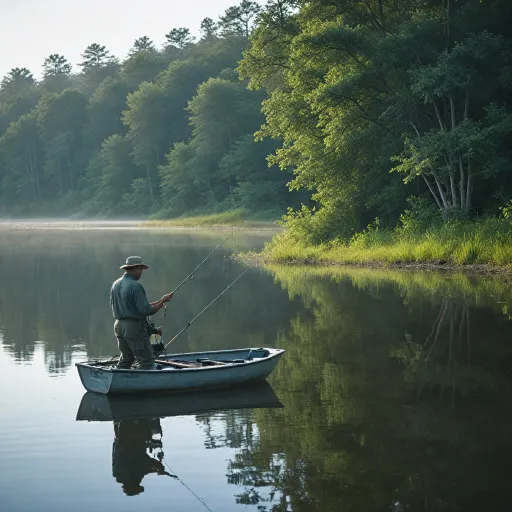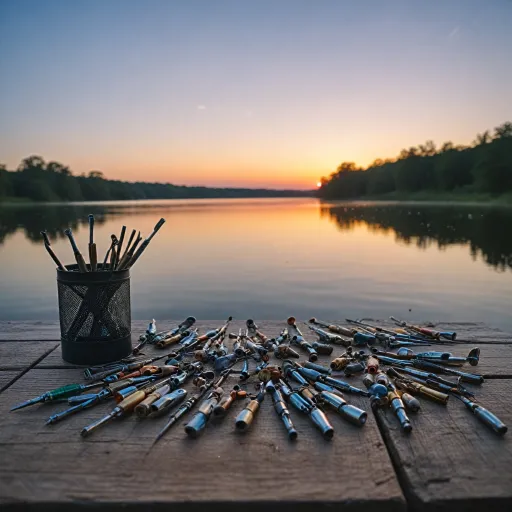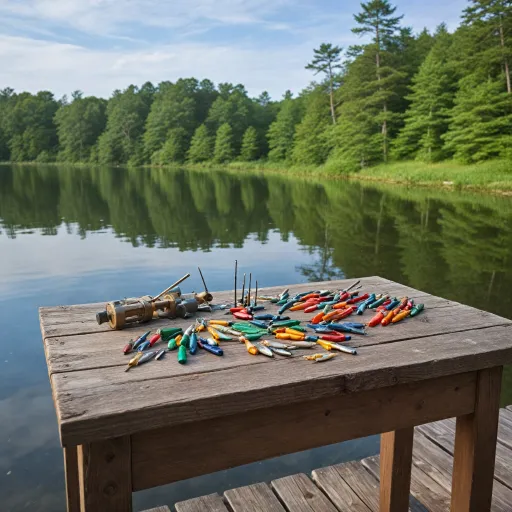
Understanding the role of a bubbler for live bait
Why Oxygen Matters for Live Bait
When you’re out fishing, keeping your live bait in top condition can make all the difference. The main reason anglers use a bubbler, also called a bait aerator or air pump, is to increase the oxygen level in the water where bait is stored. Bait fish, like minnows or shiners, need a steady supply of oxygen to stay alive and active. Without enough air, they quickly become sluggish or die, making them less appealing to your target catch.
A bubbler works by producing bubbles in the water, which helps fill the bait container with oxygen. This process is essential, especially if you’re using a small bucket or live well. The more bait you have, the faster the oxygen gets used up. A quality bait pump or aerator will keep the water moving and oxygenated, helping your bait stay lively for a longer time.
How Bubblers Help Maintain Healthy Bait
When you add a bubbler to your bait setup, you’re not just keeping the bait alive—you’re keeping it in good condition. Lively bait is more attractive to fish and increases your chances of a successful catch. Bubblers come in different types and price ranges, from simple battery-powered air pumps to advanced water pumps designed for larger live wells. The right choice depends on how much bait you need to keep alive and how long you plan to fish.
It’s also worth noting that the stroke width of the pump and the size of the bubbles water can impact how well the aerator works. Smaller bubbles dissolve oxygen more efficiently, helping your bait stay in top shape. If you’re interested in learning more about selecting the best lures for your trip, check out this guide on choosing the right fishing plugs for better catches.
While a bubbler is a popular solution, it’s not the only way to keep bait alive. In the next section, we’ll look at when a bubbler really makes a difference and explore some alternative methods for maintaining lively bait.
Situations where a bubbler makes a difference
When a Bubbler Becomes Essential for Your Bait
There are times when a bubbler or bait aerator isn’t just a nice-to-have, but a real game changer for keeping your live bait in top condition. The main job of a bubbler is to fill the water with oxygen, using bubbles to keep bait fish alive and active. But does every fishing trip require one? Not always. Here’s when a bubbler makes a noticeable difference:
- Hot weather or warm water: Oxygen levels drop as water temperature rises. A bait pump or air pump will help maintain good oxygen levels, keeping your bait alive longer.
- Long fishing sessions: If you’re out for hours, a bubbler or bait aerator will work to keep the water fresh and oxygenated over time, especially in a closed bait bucket or livewell.
- High bait density: When you pack a lot of live bait into a small container, oxygen gets used up fast. Bubbles from a water pump or aerator will help avoid mass die-offs.
- Transporting bait: Moving bait from one spot to another? A portable bubbler or bait pump can make the difference between arriving with lively bait or a bucket of floaters.
- Using sensitive bait species: Some bait fish, like shad or herring, need more oxygen than others. A good aerator or air pump is almost mandatory for these species.
For anglers who want to keep their bait alive and kicking, a bubbler is often the best solution. But it’s not the only way to maintain lively bait—other methods and gear can help too. If you want to dive deeper into how livewells and bait buckets can enhance your fishing experience, check out this guide on livewells and bait buckets.
Remember, the right setup will depend on your fishing style, the type of bait, and how long you need to keep it alive. In some cases, investing in a quality bubbler or bait aerator is well worth the price for peace of mind and better fishing results.
Alternatives to using a bubbler
When a Bubbler Isn’t Your Only Option
While a bubbler or bait aerator is a top choice for keeping live bait in good condition, it’s not the only way to fill your bait well with oxygen. Depending on your fishing style, budget, and how long you need to keep bait alive, there are a few alternatives that can work well. Here’s a look at some practical options:
- Manual Water Exchange: Regularly swapping out old water for fresh, cool water helps maintain oxygen levels. This method works best for short fishing trips or when you have easy access to clean water. It’s simple, but you need to do it often to keep bait fish alive.
- Water Pumps: A small water pump can circulate water in your bait bucket or live well, helping to keep oxygen levels up. While not as effective as a dedicated air pump or aerator, it’s a good backup if your main bubbler fails.
- Frozen Water Bottles: Adding a frozen bottle to your bait container keeps the water cool, slowing down the metabolism of your bait and helping them stay alive longer. This method doesn’t add oxygen, but it’s a good trick in hot weather.
- Oxygen Tablets: These tablets release bubbles and oxygen into the water over time. They’re convenient and portable, but may not be as effective as a powered aerator for longer trips.
Each method has its pros and cons. Manual water exchange is low cost but takes time and effort. Water pumps and air pumps need power, but they do a good job of keeping bubbles in the water. Oxygen tablets are easy to carry, but their effect is limited by the size of your bait well and the amount of bait you’re keeping.
For anglers who want to maximize their bait’s survival, combining a bubbler with one of these alternatives can be a smart move. And if you’re looking to upgrade your gear, check out this guide on choosing the best braided fishing line for your setup—it’s another way to make your time on the water more productive.
Remember, the right method depends on your fishing conditions, the type of bait, and how long you need to keep it alive. Whatever you choose, keeping your bait in good shape will help you catch more fish and make your day on the water a success.
Potential drawbacks of using a bubbler
What Can Go Wrong With Bubblers?
While a bubbler or bait aerator can be a game-changer for keeping live bait in top condition, it’s not without its issues. Here’s what recreational anglers should consider before relying solely on a pump or air pump to keep bait alive and lively.
- Battery and Power Concerns: Many portable bubblers run on batteries. If you’re out fishing for a long time, batteries can die, leaving your bait fish without fresh oxygen. Some aerators use rechargeable batteries or plug into a water pump, but these options may not always be available or convenient.
- Noise and Vibration: Some bait pumps and aerators can be noisy. The constant hum or vibration might disturb fish in the area or simply become annoying over time. It’s a good idea to test the noise level before heading out.
- Water Quality Issues: Bubblers add air and bubbles water, but they don’t remove waste or toxins. If you don’t change the water regularly, ammonia and other contaminants can build up, harming your live bait. A bubbler is not a substitute for good water management.
- Over-Aeration: Too many bubbles or too much air can actually stress some bait species. It’s important to match the stroke width and output of your bait aerator to the size of your bait bucket or livewell. More isn’t always better.
- Durability and Price: Not all bubblers are built the same. Cheaper models may fail quickly or have weak pumps that don’t fill the water with enough oxygen. Investing in a good quality aerator or water pump can save you money and frustration in the long run.
- Maintenance Needs: Bubblers and pumps need regular cleaning to prevent clogs and keep them working well. Neglecting maintenance can reduce their effectiveness and shorten their lifespan.
Remember, while a bubbler will help keep your bait alive, it’s just one part of the equation. Good water quality, the right container, and regular checks are all essential for keeping bait in prime condition for fishing. Always review the privacy policy of any product or brand you consider, especially if you’re shopping online for a new bait aerator or pump.
Choosing the right bubbler for your needs
Key Features to Look for in a Bait Aerator
When it comes to picking a bubbler or bait aerator, the right choice will make a big difference in how well your live bait stays healthy and active. Not all bubblers are created equal, so it’s worth paying attention to a few important details before you buy.
- Oxygen Output: The main job of a bubbler is to fill the water with enough oxygen to keep your bait alive. Look for a pump or air pump that produces a steady stream of bubbles. More bubbles mean more oxygen, which is good for bait fish.
- Battery Life and Power Options: If you fish for long periods, a bubbler with a long-lasting battery or multiple power options (like USB or 12V adapters) will keep your bait alive longer. Some models even offer rechargeable batteries, which can be a good investment over time.
- Water Resistance and Durability: Since your aerator will be exposed to water, splashes, and rough conditions, choose a model that’s built to last. A well-sealed bait pump or water pump will work reliably even after repeated use.
- Noise Level: Some bubblers are quieter than others. If you prefer a peaceful fishing experience, check reviews for noise ratings. A quiet aerator won’t spook your bait or disturb your time on the water.
- Size and Compatibility: Make sure the bubbler fits your bait bucket or live well. Some aerators are designed for small containers, while others can handle larger tanks. The right fit will help keep your bait in top shape.
- Price and Value: While you don’t always need the most expensive model, a good quality bubbler is worth the price if it keeps your bait alive and active. Compare features and read user feedback to find the best value for your needs.
Making the Most of Your Bait Aerator
Once you’ve chosen a bubbler, remember that regular maintenance is key. Clean the air stones and replace batteries as needed to keep the pump working well. Also, avoid overfilling your bait container—too many bait fish in a small space will reduce oxygen levels, no matter how good your aerator is. Keeping your equipment in top condition will help you get the most out of every fishing trip, and ensure your live bait stays lively and ready for action.
Practical tips for maintaining lively bait
Simple habits for lively bait
- Keep the water clean. Regularly change the water in your bait bucket or livewell. Dirty water reduces oxygen and can stress bait fish. Use fresh, cool water whenever possible.
- Don’t overcrowd. Too many bait fish in a small space means less oxygen for each one. A good rule is to fill your container with only as much bait as your aerator or pump can handle.
- Monitor temperature. Warm water holds less oxygen. If you’re fishing on a hot day, add ice packs (not ice cubes, which can shock the bait) to keep water cool and oxygen levels up.
- Use your bubbler or bait aerator properly. Make sure the air pump or water pump is working well and producing steady bubbles. Check the stroke width and flow rate—too much agitation can stress bait, but too little won’t keep them alive.
- Top up oxygen. If you notice bait fish gasping at the surface, it’s a sign they need more air. Increase the aerator’s output or add a second air pump if needed.
- Feed your bait if you’ll keep them a long time. Some live bait, like minnows, benefit from a pinch of food if you plan to fish all day. Don’t overfeed, as leftover food will foul the water.
- Check your gear. Inspect hoses, batteries, and connections on your bait pump or aerator before every trip. A failed pump can mean dead bait in no time.
Extra tips for longer trips
- Bring spare batteries for your air pump or bubbler.
- Have a backup bait aerator or manual aerator on hand.
- Consider a privacy policy for your fishing group if you share bait or equipment, to keep everyone on the same page about gear use and maintenance.
Following these practical steps will help you keep your live bait in top shape, whether you use a bubbler, water pump, or just good old-fashioned clean water and attention. The right habits make your bait last longer and work better, giving you a good shot at a successful day on the water.



-large-teaser.webp)









